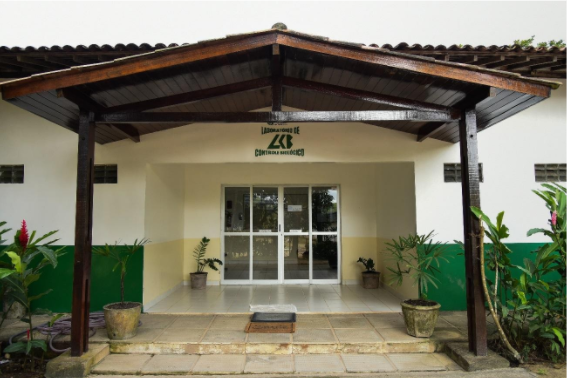Santo Antonio Sugar Company has a Biological Control Laboratory where two species of parasitoids are raised for use in Integrated Pest Management (IPM) in the sugarcane crop. The first species raised is Cotesia flavipes (Cameron) (Hymenoptera: Braconidae) a gregarious larval endoparasitoid of the sugarcane borer species Diatraea saccharalis (Fabricius, 1794) and Diatraea impersonatella (Walker, 1863) (Lepidoptera: Crambidae).
The second is Tetrastichus howardi (Olliff, 1893) (Hymenoptera: Eulophidae), also a gregarious endoparasitoid, larval and mainly of pupae of Diatraea spp. and other insect species. The parasitoids are released in flooded form in the sugarcane fields of the mill, thus integrating a form of Applied Biological Control (ABC).
Other main sugarcane pests monitored and controlled by the Laboratory:
- “Giant sugarcane borer” Telchin licus (Lepidoptera: Castiniidae), through manual scavenging of the immature forms in their last stages. This mechanical control is very efficient when done with the plant still without inter-nodes. Taking as a reference the dry cane flag leaf, popularly known as “dead eye”.
- “Mahanarva posticata (Stal,1855) and Mahanarva fimbriolata (Stal,1854) (Hemiptera: Cercopidae). Both cercopid species are controlled by IPM, with emphasis on Biological Control carried out by the application of the entomopathogenic fungus Metarhizium anisopliae (Hypocreales: Clavicipitaceae).
Secondary Pests:
- Hyponeuma tautula (Lepidoptera: Noctuidae) commonly known as the hairy borer of sugarcane, causes damage similar to that of Telchin licus in the early stages. It has the potential to become a pest of major importance for the crop. Its control is mechanical, by scavenging the caterpillars.
- Metamasius hemipterus (Coleoptera: Curculionidae) attacks cane seeds and reduces germination causing planting failures. The control is mechanical and cultural by collecting the immature forms and destroying heavily attacked ratoon trees.
- Atta spp. sauba ants (Hymenoptera: Formicidae) cut the young leaves of newly sprouted plants up to 3 months old. They cause a delay in the development of the cane field. Control is done with the use of ant baits.
- Mocis latipes (Lepidoptera: Noctuidae) the military caterpillar causes damage by defoliating the cane in the periods before winter. It occurs in small isolated areas (clusters).








